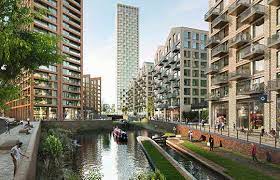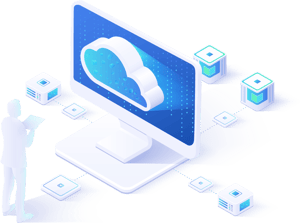Lloyds Banking Group plc (LON:LLOY) has announced its Q3 2021 Interim Management Statement.
“I am delighted to be introducing my first set of results as CEO of Lloyds Banking Group. It is very clear to me that the Group is a truly purpose-driven organisation with a real customer focus. The Group has a great franchise, an excellent digital proposition and a real depth of talent. I have been impressed with the Group’s ability to Help Britain Recover from the pandemic, its commitment to sustainability and diversity, as well as its strong risk stewardship.
Building on the strengths of the Group and its achievements in recent years, there are clearly significant opportunities for Lloyds Banking Group to further develop its platforms and capabilities and grow through disciplined investment, empowering colleagues, enhancing collaboration and increasing agility across the Group. This can be built on the foundation strengths of customer service, distribution, and cost management. As we move into the final quarter of 2021, the Board, Group Executive Committee and I are developing the next evolution of our strategy and longer-term priorities. I look forward to working with all colleagues across the Group in continuing to build a resilient, stable Lloyds Banking Group and deliver sustainable, long-term returns for our shareholders, whilst meeting the needs of broader stakeholders.”
Charlie Nunn, Group Chief Executive
HIGHLIGHTS FOR THE NINE MONTHS ENDED 30 SEPTEMBER 2021
Continued business momentum and solid financial performance
• Strong progress on Strategic Review 2021 priorities, including an all channel net promoter score and mobile app net promoter score above 2021 targets, improved capabilities in Markets products and a 12 per cent increase in new clients using the Group’s improved merchant services proposition
• Statutory profit before tax of £5.9 billion (£2.0 billion in the quarter) and underlying profit of £6.3 billion (£2.2 billion in the quarter), both up significantly compared to the first nine months of 2020
• Solid net income of £11.6 billion, up 8 per cent (up 20 per cent compared to the third quarter of 2020), benefiting from increased average interest-earning assets of £443.0 billion, a banking net interest margin of 2.52 per cent and other income of £3.8 billion, alongside a reduction in operating lease depreciation
• Sustained cost discipline with operating costs of £5.6 billion, up 1 per cent compared to the first nine months of 2020, including the impact of rebuilding variable pay. Remediation charge of £100 million in the third quarter
• Asset quality remains strong. Net impairment credit of £740 million, including a net credit of £84 million in the third quarter, based upon improvements to the macroeconomic outlook for the UK, combined with robust credit performance. Management judgements in respect of coronavirus of c.£1.2 billion retained
Balance sheet and capital strength further enhanced
• Loans and advances at £450.5 billion, up £10.3 billion (£2.8 billion in the third quarter), driven by strong growth of £15.3 billion in the open mortgage book (£2.7 billion in the third quarter)
• Customer deposits of £479.1 billion, up £28.4 billion (£4.7 billion in the quarter), with continued inflows to the Group’s trusted brands, including Retail current accounts up £12.2 billion. Resulting loan to deposit ratio of 94 per cent provides a strong liquidity position and significant potential to lend into recovery
• Strong capital build of 159 basis points. CET1 ratio of 17.2 per cent after dividend accrual, significantly ahead of the ongoing target of c.12.5 per cent, plus a c.1 per cent management buffer and regulatory requirement of c.11 per cent
Outlook
• Given our solid financial performance and the improved UK macroeconomic outlook, the Group is enhancing its guidance for 2021. Based on the Group’s current macroeconomic assumptions:
- Net interest margin now expected to be modestly above 250 basis points
- Operating costs expected to be c.£7.6 billion
- Impairment now expected to be a net credit for the year
- Return on tangible equity now expected to be over 10 per cent, excluding the c.2.5 percentage point benefit from tax rate changes
- Risk-weighted assets in 2021 expected to be below £200 billion
• The Group continues to target a return on tangible equity in excess of its cost of equity in the medium term
REVIEW OF PERFORMANCE
Strong strategic progress
During the first nine months of 2021, the Group has made meaningful progress across our Helping Britain Recover priority areas. We have expanded the availability of affordable and quality homes with new lending of c.£12.8 billion to first-time buyers, exceeding our full year 2021 target of £10 billion. In addition, we have continued to help businesses recover, adapt and grow through supporting over 70,000 businesses in start up and helping more than 130,000 small businesses boost their digital capabilities. The Group continues to contribute to the transition to a low carbon economy, including introducing a flagship fossil fuel-free fund allowing pension savers to invest with positive environmental impact.
We are making strong strategic progress against our customer focused ambitions. During the first nine months of 2021, the Group has continued to focus on its aim of being the preferred financial partner for personal customers with net open mortgage book growth of more than £15 billion. Our all channel NPS and mobile app NPS have both continued to improve in 2021 and are ahead of the targets we outlined in February. The Group generated £5 billion net new open book Assets Under Administration in Insurance and Wealth, as well as enhancing our Wealth offering through the announced acquisition of Embark Group. In our vision to become the best bank for business, during the first nine months of 2021, we have delivered more than 50 per cent growth in SME products originated via a digital source compared to the same period in 2020. Alongside this, we have continued to improve our ranking in core Markets areas, such as GBP rates.
The Group continues to enhance its capabilities, including an improved merchant services proposition and distribution capabilities, delivering 12 per cent new client growth in the first nine months of 2021. We have continued the roll out of hybrid ways of workings and remain on track for an 8 per cent reduction in office space in 2021, with 5 per cent delivered so far. We are continuing to build our data-driven organisation with more than 25 per cent increase in SME client engagement following the roll out of data-driven targeted marketing in June 2021.
Statutory results
The Group’s statutory profit before tax for the nine months ended 30 September 2021 was £5,934 million, benefiting from continued business momentum and a net impairment credit based upon the improved macroeconomic outlook. Statutory profit after tax was £5,465 million.
The Group’s balance sheet reflects continued franchise growth. Loans and advances to customers, excluding reverse repurchase agreements, were 2 per cent higher at £450.5 billion, compared to £440.2 billion at 31 December 2020, driven by strong growth in the open mortgage book of £15.3 billion. Customer deposits, excluding repurchase agreements, have increased by £28.4 billion since the end of 2020, with continued inflows to the Group’s trusted brands.
Underlying results†
The Group’s underlying profit for the first nine months of the year was £6,255 million, compared to £881 million for the same period in 2020, reflecting both solid financial performance and the improved macroeconomic outlook for the UK. Underlying profit before impairment for the period of £5,515 million continues to recover, up 10 per cent against the nine months to 30 September 2020. In the third quarter underlying profit before impairment was £2,106 million and underlying profit was £2,190 million, up 27 per cent and 10 per cent respectively on the second quarter of 2021.
Net income performance of £11,641 million was solid, up 8 per cent on the first nine months of 2020 with stronger net interest income and other income. Net interest income of £8,270 million was up 2 per cent year on year, benefiting from average interest-earning banking asset growth and a banking net interest margin of 2.52 per cent (nine months to 30 September 2020: 2.54 per cent). The Group’s banking net interest margin in the third quarter of 2.55 per cent was up 4 basis points on the second quarter, reflecting increased structural hedge earnings, funding benefits and higher retail overdraft balances. Average interest-earning banking assets were up 2 per cent compared to the first nine months of 2020 at £443.0 billion, driven by strong growth in the open mortgage book and the impact of three quarters of government-backed lending during 2021, compared to two quarters in 2020. This was partially offset by continued optimisation in Commercial Banking, the repayment of revolving credit facilities provided to support commercial clients during the pandemic and lower average balances in credit cards and Motor Finance for the year to date.
As at 30 September 2021 the Group’s structural hedge had an approved capacity of £240 billion. This represents an increase from £225 billion at 30 June 2021, £210 billion at year end 2020 and £185 billion at year end 2019, on the basis of substantially greater deposit inflows since year end 2019 (inflows of £67 billion). The nominal balance of the structural hedge was £225 billion at 30 September 2021 (31 December 2020: £186 billion) with a weighted-average duration of around three-and-a-half years (31 December 2020: around two-and-a-half years). The Group generated £1.6 billion of total gross income from the structural hedge balances in the period (nine months to 30 September 2020: £1.9 billion), with income in the third quarter of £0.6 billion, showing an increase versus the first half run rate of £0.5 billion per quarter.
Other income of £3,753 million was 9 per cent higher compared to £3,449 million in the first nine months of 2020, with £1,336 million in the third quarter. Performance reflected gradually increasing customer activity, particularly strong returns in the Group’s equity investment business (including Lloyds Development Capital) both in the third quarter, and the year to date, partly offset by a reduced Lex fleet size and lower levels of gilt sales. In the third quarter, Retail other income benefited from increased customer activity levels, whilst Insurance and Wealth was broadly stable. Commercial Banking, although up on the third quarter of 2020, was down slightly against the second quarter of 2021 due to lower Markets and corporate financing activity. The Group’s equity investment business generated c.£250 million of other income in the quarter, with Lloyds Development Capital c.£100 million above its typical run rate. Operating lease depreciation reduced to £382 million (nine months to 30 September 2020: £734 million) as a result of stronger used car prices, combined with the continued impact of a reduced Lex fleet size.
Total costs of £6,126 million were 5 per cent higher than in the first nine months of 2020, due to both slightly higher operating costs and a higher remediation charge in the period. In the context of continued stronger than expected financial performance in income and impairments, as announced at the half-year, the Group accelerated the rebuild of variable pay, which has resulted in the increase in operating costs. The Group continues to maintain its focus on cost management, with a market-leading cost:income ratio of 52.6 per cent.
Remediation charges increased to £525 million (£100 million in the third quarter), which included the previously announced £91 million regulatory fine relating to the past communication of historical home insurance renewals, redress and operational costs in respect of HBOS Reading and litigation costs and charges relating to other ongoing legacy programmes. Year to date, £190 million has been recognised in relation to HBOS Reading redress and operational costs, including £40 million in the third quarter. As previously indicated, further significant charges in relation to HBOS Reading could be required in future quarters, although it is not possible to reliably estimate the potential impact or timings at this stage.
Asset quality remains strong, with sustained low levels of new to arrears. Impairment was a net credit of £740 million, compared to a net charge of £4,119 million in the first nine months of 2020. Within this, the first nine months of the year have seen a low impairment charge of £411 million before the impact of economic outlook revisions (first nine months of 2020: £1,192 million), including £159 million in the third quarter, reflecting continued strong asset quality. The net credit in the period was significantly driven by a £1,098 million release of expected credit loss (ECL) allowances based upon improvements to the macroeconomic outlook for the UK. Of this macroeconomic outlook driven release of ECL, £261 million was recognised in the third quarter of 2021.
The Group’s ECL allowance reduced in the first nine months of the year by £1.6 billion to £5.2 billion, c.£1 billion higher than at the end of 2019 (31 December 2020: £6.9 billion, 31 December 2019: £4.2 billion). As noted above, observed credit performance remained robust in the period, with the flow of assets into arrears, defaults and write-offs remaining at low levels. The Group has retained the judgemental overlays that were in place at the half-year, with management judgements in respect of coronavirus of c.£1.2 billion (31 December 2020: c.£0.9 billion), including the central £400 million overlay introduced at year end, as well as c.£800 million of judgements within the underlying credit portfolios (31 December 2020: c.£500 million).
Capital
The Group’s CET1 capital ratio increased to 17.2 per cent after dividend accrual, compared to 16.2 per cent at 31 December 2020. The strong capital build of 159 basis points during the first nine months of the year largely reflected banking profitability (pre-impairment credit) of 186 basis points, with a limited impairment offset of 17 basis points, being the net impact of IFRS 9 transitional relief reduction and the impairment credit year to date. Capital build also benefited from a reduction in underlying risk-weighted assets of 18 basis points, more than offset by pension and other movements of 28 basis points, primarily reflecting the full 2021 fixed contributions for the Group’s three main defined benefit pension schemes. The CET1 capital ratio reduced by a further 56 basis points in respect of the ordinary dividend accrual for 2021.
The PRA have confirmed their intention to remove the beneficial treatment currently applied to intangible software assets and reinstate the original requirement to deduct these assets in full. This change will be implemented on 1 January 2022 and is expected to reduce the Group’s reported CET1 ratio by c.50 basis points at that time. The Group continues to apply IFRS 9 transitional arrangements for capital, with the total relief recognised at 30 September 2021 amounting to 60 basis points. Excluding the IFRS 9 transitional relief and removing the current beneficial treatment applied to intangible software assets would reduce the Group’s CET1 capital ratio from 17.2 per cent to 16.1 per cent, on the basis of the position at 30 September 2021.
The PRA recently reduced the Group’s nominal Pillar 2A CET1 requirement, resulting in a reduction from the equivalent of around 2.2 per cent at 30 June 2021 to the equivalent of around 2.0 per cent on the basis of the position at 30 September 2021. The Group’s CET1 regulatory capital requirement remains at around 11 per cent. The Board’s view of the ongoing level of CET1 capital required to grow the business, meet regulatory requirements and cover uncertainties continues to be around 12.5 per cent, plus a management buffer of around 1 per cent.
Risk-weighted assets at £201 billion reduced by £2.0 billion in the first nine months of the year, primarily driven by continued optimisation activity undertaken in Commercial Banking, partially offset by limited credit migration and balance sheet growth. The Group continues to expect risk-weighted assets to be below £200 billion at the end of the year. On 1 January 2022, regulatory headwinds from the implementation of new CRD IV models (predominantly relating to mortgages) and changes to counterparty credit risk rules (SA-CCR) are expected to increase risk-weighted assets by between £15 billion and £20 billion. The exact outcome remains subject to the finalisation of the new CRD IV models and as such the Group’s estimate carries a degree of uncertainty.
IFRS 17
IFRS 17, an accounting standard that will be effective from 1 January 2023, impacts the phasing of profit recognition for insurance contracts. Upon implementation, the Group’s insurance-related retained earnings will be restated and the reporting of insurance new business revenue within other income will be spread over time as the Group provides service to its policyholders (versus recognised up front under current accounting standards), with the quantum and timing of the impact dependent on, inter alia, the amount and mix of new business and extent of assumption changes in any given year following implementation. The cash flow and economic value generated by the Group’s Insurance business does not change. There will be no impact on the Group’s or the Insurance business’ capital position, nor the ability of Insurance to pay dividends to Lloyds Banking Group. Following implementation, recognition of Insurance income will be more stable. Reduction in the Group’s shareholders’ equity from, inter alia, the removal of value in force from the Insurance business, remeasurement of insurance liabilities and the creation of a contractual service margin (CSM) liability, is expected to drive a mid-single digit pence per share reduction in the Group’s tangible net asset value.








































